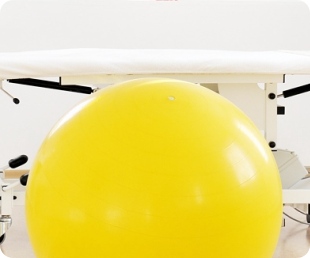

O Biocentru P
To Buy Symbicort inhaler Online Visit Our Pharmacy ↓
 Tips for Maximizing Effectiveness with Your Symbicort Inhaler
Tips for Maximizing Effectiveness with Your Symbicort Inhaler
Symbicort is a combination inhaler containing budesonide, a corticosteroid that reduces inflammation, and formoterol, a long-acting beta agonist that helps to relax the muscles around the airways. Working together, these medications help to prevent breathing difficulties, wheezing, and shortness of breath in patients with asthma or chronic obstructive pulmonary disease (COPD). It’s critical to recognize that while formoterol aids in immediate symptom relief, budesonide is for long-term control; therefore, Symbicort may not be suitable for treating sudden asthma attacks.
To effectively manage your condition, it is essential to grasp the specific purposes of the medication components. A healthcare professional can provide personalized insights on how Symbicort can be used as part of your treatment plan. By understanding the dual benefits of the medication and the desired outcomes, you can be more attuned to the changes in your body and how the inhaler supports your breathing over time. It's also worth noting that the impact of Symbicort can differ among individuals, depending on factors like the severity of the condition and response to treatment.
Master the Technique: Inhaler Use 101
Proper use of a Symbicort inhaler is crucial for effective management of asthma or COPD symptoms. Begin by shaking the inhaler well for at least five seconds to mix the medication properly. Breathe out fully to empty your lungs, place the mouthpiece between your lips, and create a tight seal. As you start to breathe in slowly and deeply through your mouth, press down on the inhaler to release a dose. Keep inhaling the medication until your lungs are full, then hold your breath for up to 10 seconds, allowing the medication to settle into your airways. Exhale slowly and wait for about 30 seconds if a second puff is needed. It's important to breathe in slowly to ensure the medication disperses effectively throughout your lungs.
Regular practice of effective inhalation techniques is key to maximizing your inhaler’s benefits. It’s recommended to stand or sit upright when taking your dose to aid lung expansion. After inhalation, rinse your mouth with water without swallowing to help prevent infections and irritation by removing residual medication. Be attentive to the inhaler's dose counter to monitor medication levels and avoid running out unexpectedly. If using Symbicort as a maintenance therapy, adherence to the prescribed schedule, regardless of symptom improvement, constantly reinforces the medication’s preventive purpose. Reviewing your inhalation technique periodically with a healthcare professional can help correct any improper habits that may have formed unknowingly.
Establishing a Consistent Inhaler Routine
Creating a regular schedule for your Symbicort inhaler can significantly enhance its effectiveness in managing asthma or COPD. For long-term control medications like Symbicort, adherence to a prescribed routine not only helps in maintaining steady drug levels in your system but also reduces the likelihood of experiencing severe flare-ups. Choose times that align with daily habits, such as brushing your teeth or preparing for bed, to integrate inhaler use seamlessly into your lifestyle. Setting alarms or using pill organisers can serve as helpful reminders to take your medication as directed.
Accounting for both the preventive and as-needed aspects of Symbicort is important. The maintenance doses should be taken at the same time each day, while the as-needed doses should be used when experiencing breathing difficulties. However, it is crucial not to exceed the recommended number of inhalations. Consistent communication with your healthcare provider can help adjust your routine if your symptoms change, ensuring that the treatment plan remains tailored to your current needs. Keep a log of your inhaler usage to discuss during medical appointments and make any necessary adjustments to your routine.
Identify and Avoid Common Inhaler Missteps
Avoiding common inhaler mistakes is critical for effective medication delivery when managing conditions like asthma or COPD. One error is exhaling into the inhaler before taking a puff, which can affect the dose you receive. Another is inhaling too quickly or too slowly, which can lead to less medication reaching the lungs. Additionally, not holding one's breath after inhalation can lead to much of the medicine escaping before it has a chance to settle in the lungs. It is also important not to skip the pre-inhalation shake of the canister, as this mixes the medication properly.
Inhaler users should ensure they are upright during use, as slouching can constrict the airways, limiting medication intake. A further mishap involves neglecting to wait the full minute between puffs, if multiple puffs are prescribed, which ensures that the second dose is properly dispersed and absorbed. Properly timing the inhaler use with your breathing is crucial for optimum medication deposition. Lastly, always check the expiry date and remaining dose count regularly to ensure medication effectiveness and availability when needed.
Clean Your Inhaler to Ensure Full Potency
Maintaining the cleanliness of your Symbicort inhaler is vital for its efficacy and longevity. Over time, the inhaler can accumulate dust, dirt, or medication residue, which can obstruct the medication pathway and reduce the delivered dose. To clean it, detach the canister and rinse the plastic casing with warm water once a week, avoiding the use of soaps or detergents that may leave harmful residues. Allow the parts to air dry completely before reassembling to prevent the growth of bacteria or fungi.
It's also important to check the mouthpiece for debris regularly, especially if the inhaler falls or is stored without a cap. Before drying, a gentle shake of the plastic case will remove excess water, ensuring no moisture remains which could affect the medication. Adhering to a proper cleaning routine ensures that every dose administered from the inhaler is effective and safe, thus maintaining optimal treatment outcomes for asthma or COPD management.
Track Your Asthma or Copd Symptoms Closely
Closely monitoring your respiratory symptoms is essential for managing conditions like asthma or COPD effectively. Keeping a detailed symptom diary can be incredibly beneficial. In this diary, record the frequency, duration, and triggers of your symptoms, as well as noting the use of your Symbicort inhaler. Be vigilant about any changes in your breathing patterns, levels of wheezing, or occurrences of shortness of breath. By doing so, you can discern patterns and recognize signs of exacerbation early, which enables timely intervention and adjustments to treatment plans.
Equally important is open communication with your healthcare provider, sharing the insights from your symptom diary. This practice helps to fine-tune your management plan. Utilize digital tools or apps designed for respiratory health tracking, which often include reminders for medication use and provide a platform for easy data sharing during medical appointments. Remember, proactive symptom tracking empowers you to take control of your health, making each inhaler dose as effective as it can be in managing your respiratory condition.
https://www.cappskids.org/wp-content/uploads/2022/08/png/chloroquine.html https://www.clerkenwellislingtonclinics.co.uk/wp-content/uploads/2022/08/png/cytotec.html https://www.urologicalcare.com/wp-content/themes/chunky-child/assets/js/cipro.html





